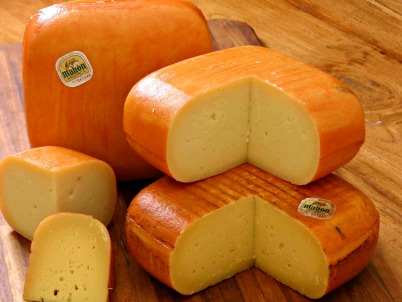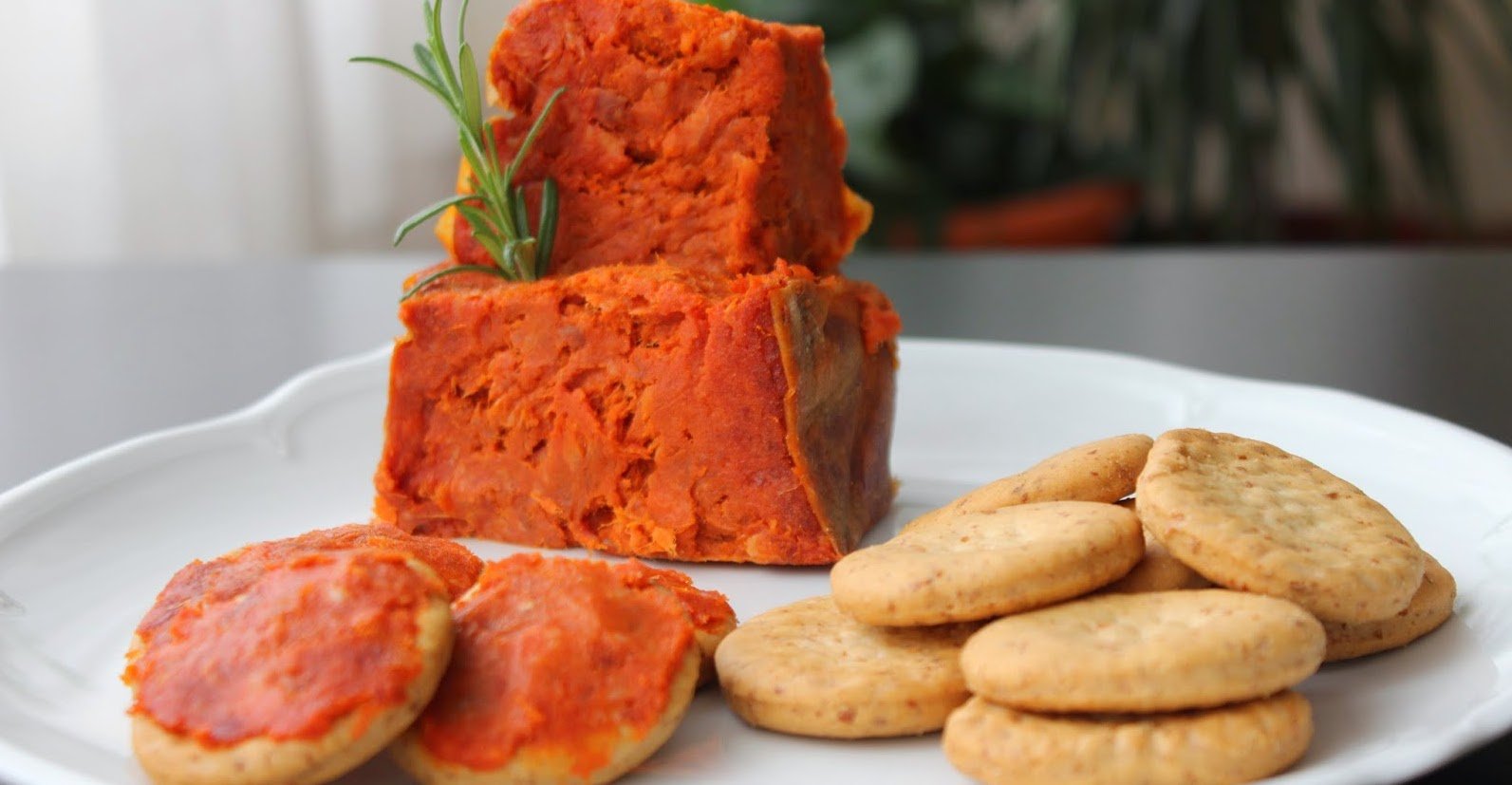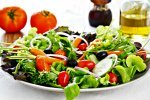Mahon Cheese
Also known as 'Minorcan' cheese, this fresh cheese is made on the Balearic Islands with raw or pasteurised cow's milk from the Frisian, 'Mahonesa' or 'Minorcan', and/or the Alpine Brown breeds. Small amounts (no more than 5%) of sheep's milk from the 'Minorcan' breed are also allowed. It is rectangular, with rounded edges and a cleft on the top left by the knot of the cloth (the 'fogasser') used as a mould.
The cheese is medium to large, very tall, and weighs up to 5 kilos or more. The rind is smooth and closed, and its colour varies between ivory white and intense yellow. It has a characteristic flavour, slightly acid, salty and a bit buttery. Depending on its ageing, it can be milky and moist when it is fresh, or dry, sharp and somewhat spicy as the ageing time is lengthened.

Varieties
Depending on the production method, there are two types of cheese: Mahón Artesano, made with raw milk, and Mahón, made in industrial cheese shops. Also, depending on the ageing, there are:
- Mild Mahón: Soft, easy to cut, white in colour, high percentage of moisture. Gentle, lightly salted and acidic flavour
- Medium cured Mahón: Oily and yellowish ivory in colour. It is easy to cut, with the surface remaining smooth, intact and shiny. The flavour is more intense, although it maintains a hint of butteriness. Its maturing period is less than 150 days.
- Cured Mahón: With a firm texture, it is a very hard cheese that crumbles when cut. Its colour is dark yellow and its flavour salty, with something of a spicy touch. The maturing period is above 150 days.
- Mature Mahón: With a dark coloured rind and dry appearance. The colour of the cheese is yellowish and its flavour very intense and spicy
Origin
Both the production region of the milk from the Frisian, 'Minorcan' and Alpine Brown breeds, and the area of the production and ageing processes of the cheese comprise the island of Minorca, which is the second largest, westernmost and northernmost island in the Balearic Archipelago.
You may be also interested in...
See also...
Balearic Islands: The gastronomy from Majorca, Menorca, Eivissa·Ibiza and Formentera is comprised of many delectable and pleasurable dishes. The cuisine takes full advantage of the islands' resources and the many cultures which have passed through the archipelago over the years have left their mark: many different civilisations (Greeks, Phoenicians, Romans, Arabs, French, English...).




